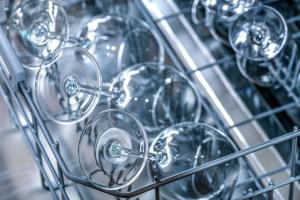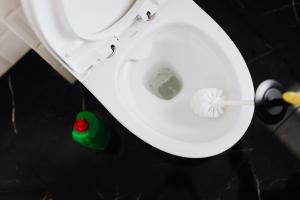
More than ever, hybrid working is becoming increasingly common in the UK. While you may be saving on gas and store-bought lunches, your water consumption will inevitably rise. With higher consumption comes increased costs, worsened if you live in a hard water area.
Without a water softener, your home is at higher risk of limescale build-up, which raises the costs more than you would expect.
How Have Water Costs Changed?
Pre-lockdown, one person would use approximately 150 litres of water daily, and the average family would use 500. If we add up how much that amounts to in a year, the average person used around 54,750 litres while families used a whopping 182,500 litres!
Going by South West Water (not including sewerage costs) as a metric for water costs per cubic metre, we can see that one cubic metre of water costs £1.9219. With this, we can calculate what annual water costs amounted to pre-lockdown.
The average yearly water costs were £105 per person.
Meanwhile, the average yearly water costs were £350 per family.
To compare, another water provider Anglian Water (again not including sewerage costs) charges £1.6853 per cubic metre of water.
The average yearly water costs were £92 per person.
Meanwhile, the average yearly water costs were £308 per family.
However, the consequences of staying home more led to water usage for things such as:
- Flushing toilets
- Cooking
- Making drinks
- Washing dishes
- Gardening
Consumption also increased by the general public following government guidelines and washing clothes, hands and showering more.
Post-Lockdown Water Costs
Even when considering regional variations, most water companies reported increased water usage in British households. Data gathered by the Met Office show that in the beginning stages of lockdown, water usage rose to about 30% above base consumption in late May, comparable to peak levels seen during the summer of 2018.
If we increase 182.5 cubic metres by 30%, we get 237.25 cubic metres. Using the costs listed above, we can see a shocking increase.
The approximate yearly water costs post-COVID are £136.5 per person.
The approximate yearly water costs post-COVID are £456 per family.
Going by Anglian Water metrics, we can see a similar increase in costs:
The approximate yearly water costs post-COVID are £119.6 per person.
The approximate yearly water costs post-COVID are £400.4 per family.
It all adds up, so reducing water consumption as much as possible is really important while working from home for a more sustainable existence. But how much of an impact is hard water making on your bills?
Does Hard Water Cost More than Soft Water?
The crucial difference between hard water and soft water is that soft water ultimately saves you more money in the long run. Hard water causes limescale to build up in household appliances, responsible for clogging valves and pipework and reducing their efficiency.
On top of the costs, it takes to continually clean and descale appliances, according to data collected by Carbon Trust, a 1mm build up of limescale in a boiler would use 7% more energy than a boiler with no limescale issues. This adds an extra £200 to energy costs yearly, potentially amounting to £600+.
How to Cut Down Water Costs When Working From Home
Higher water consumption is inevitable for those who may be working from home more often than they used to. Because of this, it’s crucial to start getting into good water habits to save on money, such as the following:
- Turn off the tap when you’re not using it.
- Flush the toilet less.
- Pour any untouched water in your pet’s bowl on plants instead of down the drain.
- Put clothes in the washing machine only when they really need it.
- Use a thermal flask for leftover kettle water so you can reuse it.
You will start to see the cost-saving effects of practising little things like the list above, which won’t just benefit your household budget but long-term sustainability to combat the looming water crisis.
H2 - How to Cut Down Hard Water Costs
Even if you’ve become more mindful of bad water habits, you will still need to deal with the extra costs caused by living in a hard water area, which is not only frustrating but unnecessary.
Initial steps involve removing the limescale yourself or contacting a specialist. However, this is only a short-term solution as limescale will constantly accumulate.
Installing a water softener is a cost-effective, long-term, low-maintenance solution to this pressing issue.
No Limescale Damage
With inflation on the rise, the prices of laundry and kitchen appliances are escalating too. According to the BBC, the average cost of a washing machine has increased by a startling 46% from January 2020.
Soft water ensures your household appliances remain limescale-free, meaning you won’t have to waste money on buying cleaning supplies, hiring a specialist to descale pipework, or in worst-case scenarios, replacing appliances.
More Lather Less Bother
With hard water, you’ll have to run water for longer as it isn’t conducive to creating the lather you’re looking for. For the perfect bubbly lather, soft water is ideal as it bubbles up quicker than hard water, which means you can reduce your shower time.
Low Maintenance
Whereas limescale requires a lot of attention and effort to descale appliances, the efficient design of our water softeners means that water softener maintenance is simple and not as demanding of your time and money as hard water is.










